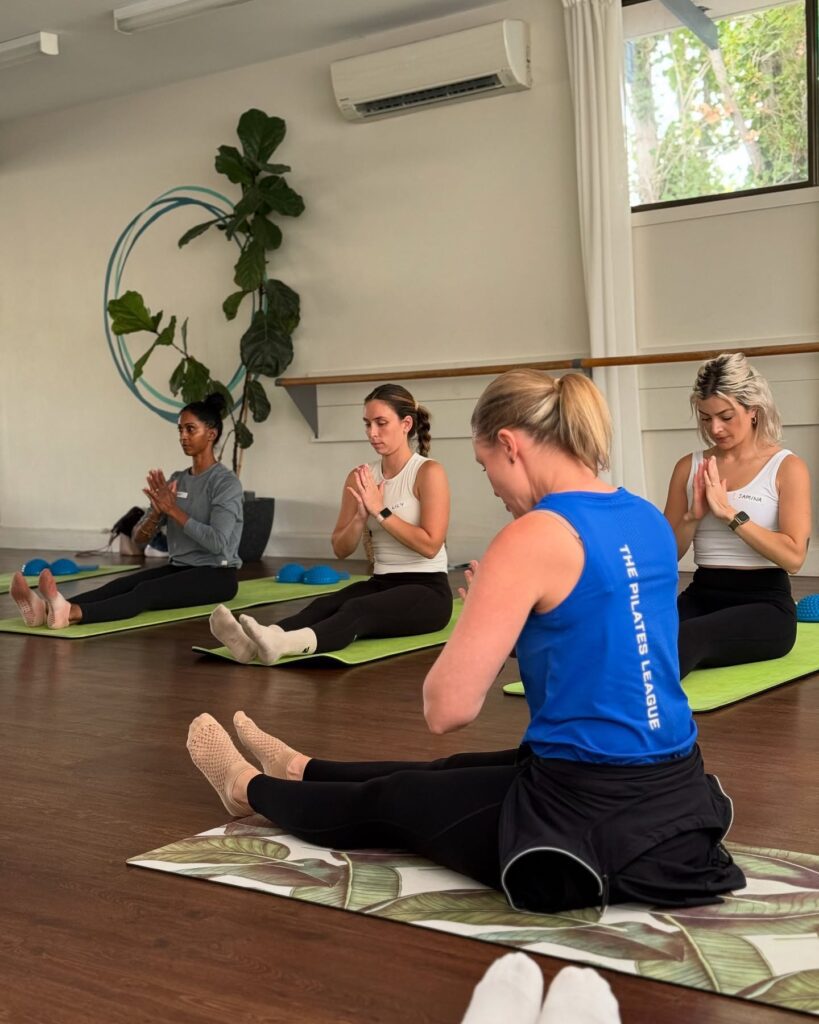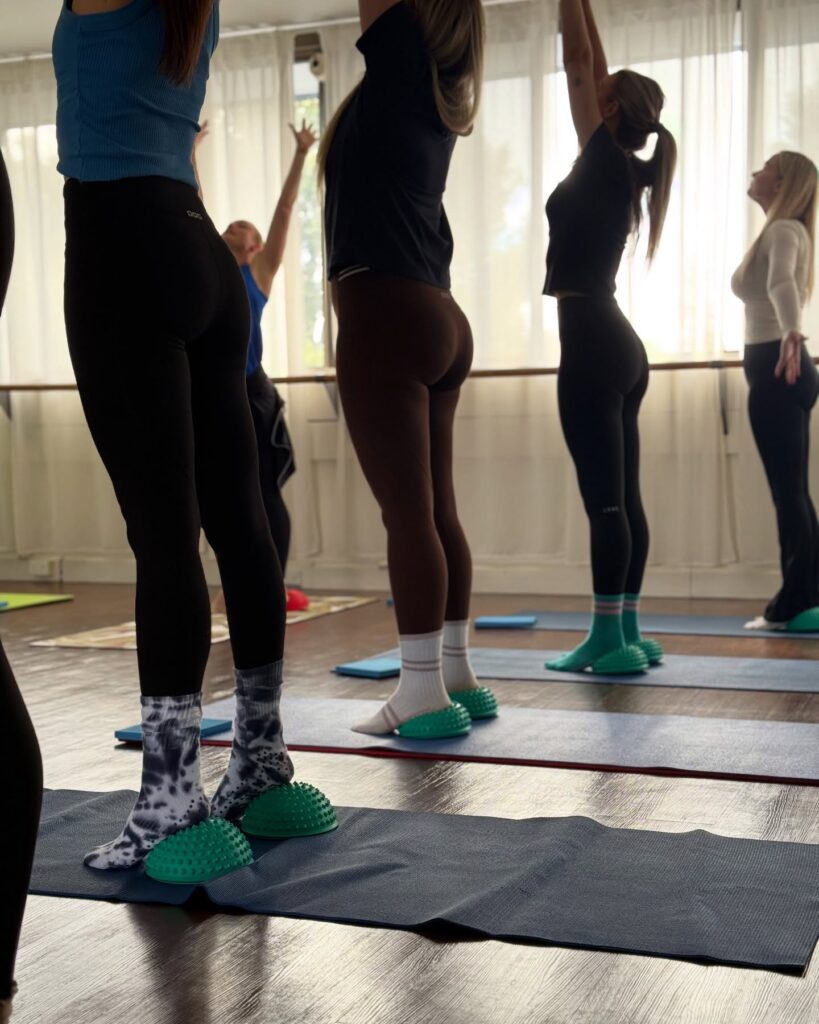- NEXT MAY
- REFORMER INTAKE
- EARLY BIRD DEAL CLOSES 27th OF APRIL 25
- NEXT MAY
- REFORMER INTAKE
- EARLY BIRD DEAL CLOSES 27th OF APRIL 25
At first glance, being a Pilates instructor might look like it’s all about great form, a powerful voice, and the ability to guide people through breath and movement. And yes, sometimes those things help. But the truth is, the most impactful instructors bring so much more to the table (or the Mat, Reformer, or Studio Equipment as it were).
Whether you’re thinking about becoming a Pilates instructor or are already on your way, understanding the key skills and qualities that make a great teacher is essential – not just for your career but for the people you’ll teach. At The Pilates League, we Know that the best
instructors are equal parts knowledgeable, encouraging, and real. Here’s what we think makes all the difference:
Being able to do Pilates is one thing. Being able to teach it clearly to someone else – in a way
they can understand and apply in their own body – is another skill entirely. Great instructors are excellent communicators. They know how to cue effectively, use accessible language, and are always able to explain the “why” behind the movement. And just as importantly, they listen. Communication is a two-way street – being able to pick up on how someone’s feeling, whether they’re struggling with grasping a movement pattern or simply having an off day, is a huge part of being able to adapt, and create a positive class experience.
Not every client walks into your class feeling their best. Some might be recovering from injury, experiencing chronic pain, others might be navigating stress, self-doubt, or simply fatigue from a long week. A good Pilates instructor doesn’t just focus on the physical – they understand the emotional layers that come with it. Meanwhile others are ready to smash it that day!
Empathy allows you to meet your clients where they’re at, not where you think they should be. It means offering modifications without judgment, celebrating progress at every level, and creating an environment where people feel safe, supported, and most importantly welcome – no matter their experience or background.



You absolutely don’t need to know every Latin muscle name off by heart, but a strong grasp of how the body moves is crucial for safe, effective teaching. Understanding anatomy helps you:
It also gives you confidence. When you know WHY something works, you’re better equipped to answer questions, adjust on the fly, and provide a higher level of care to your clients.
This is why we place such a strong emphasis on not just anatomy, but also biomechanics in our Pilates training in Australia – not to overwhelm, but to empower. And it really does!
If you’ve ever taught a class and had someone walk in with a wrist injury, another who’s pregnant, and a third who’s brand new to Pilates – all in the same session – you’ll understand why adaptability is so important.
The ability to modify exercises, shift your plan, and respond calmly to the unexpected is what makes a good instructor a great one. It’s about thinking creatively, troubleshooting on the go, and always keeping your clients’ wellbeing front of mind.
You don’t have to be a metaphorical cheerleader (unless that’s your vibe), but being able to inspire and motivate people is a HUGE part of teaching. That means celebrating small wins, encouraging progress, and helping people stay connected to their personal “why.”
Some clients might come to class chasing specific goals; others may just be hoping to feel a little more at home in their bodies. Your words, your energy, and your belief in their potential can make a world of difference.
No matter how experienced you are, the beauty of Pilates is that there’s always more to learn. Pilates is a continually evolving practice, and staying curious – about anatomy, movement science, teaching techniques, and client needs – will keep you growing in your career and your confidence.
Both myself and Isaac, strongly encourage professional development because we’ve seen the difference it makes. Whether it’s a new way to approach cueing, an updated understanding of Strength or load, or learning to support clients with different needs – ongoing education keeps your teaching fresh, informed, and impactful.
Plus, it’s a great way to stay connected with other instructors and feel part of a community that’s just as passionate as you are.
Clients come to you for more than just movement – they’re placing their trust in you. They’re trusting you to guide them safely, to respect their time, and to be someone they can rely on.
Consistency, punctuality, honesty, and a strong sense of professional boundaries all go a long way in building lasting client relationships. When your clients know that they’re in good hands – physically and professionally – they’re much more likely to keep coming back.
You don’t need to sound like anyone else or teach like anyone else. The best instructors bring their own personality. Whether you’re calm and steady, high-energy and expressive, or somewhere in between, what matters most is being real.
Your clients will connect with you because of your unique presence, not because you fit a particular Pilates stereotype. Show up with care, curiosity, and a willingness to grow – the rest will follow.
Thinking About Becoming a Pilates Instructor?
If reading this has you thinking, “I could do this – and I’d love to,” then you’re already halfway there. The truth is, no one starts out knowing everything – but with the right training, mentorship, and support, you can absolutely build the skills and confidence to be an incredible instructor.
Our training programs at The Pilates League are designed to nurture WAY more than just technique. We focus on building knowledge, confidence, and connection so that when you step into your first class (or your fiftieth), you feel ready, supported, and excited to teach.
So if you’re passionate about movement, curious about the human body, and love the idea of helping others feel stronger and more connected, we’d love to welcome you into our community!
All rights are reserved © Copyright 2024 – The Pilates League
Website by Studio22